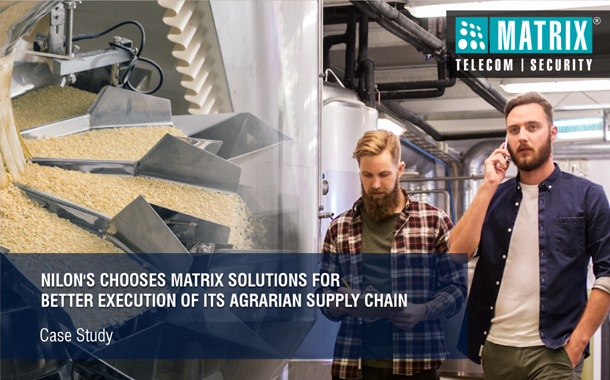With Cloud growth sweeping the businesses off their feet, the demand for Data Centers as spurred by social media companies and Cloud service providers has spiked to an all-time high.
The surge in Cloud dependency amidst a rise in digitised services point towards a massive investment in hybrid infrastructure services. As per Synergy Research Group, the number of Hyperscale Data Centers has been witnessing a hike, with the total capacity growing faster than the size of the average Data Center. While the number of Hyperscale Data Centers soared within a duration of five years, the Data Center capacity took less than four years to double up.
While firms outrun each other in building their digital infrastructure to meet the demand of the digital communities, the mushrooming Data Centers are getting leased out even before they are completed. The CapEx involved in creating, maintaining, and updating a vast computing facility has opened doors for Colocation Data Centers.
Colocation Data Centers v/s Captive Data Centers
The traditional On-premises Data Centers are purposefully-built facilities that are designed to store, power, cool and connect IT infrastructure within client-owned, low-cost locations. In such facilities, the service resources directly cater to and are maintained by the organisation.
A Colocation Data Center, on the other hand, is more like a rental service to store your digital infrastructure. While captive Data Centers are in-house storage rooms within an organisation, Colocation hosts privately-owned servers and networking infrastructure in a third-party Data Center. Colocation helps organisations to share the storage space as well as the cost of cooling, power, and communication with other renters.
The Pros and Cons of Colo v/s In-House Data Centers
Both in-house Data Centers and Colocation Data Centers have their benefits and drawbacks. How you choose between the two depends upon how viable the advantages are for your organisation. Here’s a peek into the pros and cons of both Captive and Colocation Data Centers:
Advantages Of Captive Data Centers:
- As an On-premises facility, captive Data Centers provide flexibility and control in modifying, updating, and expanding capabilities to those having access to it. It is done according to strict compliance regulations.
- Such Data Centers ensure 24/7 access irrespective of their high maintenance cost and manpower requirement.
- Captive Data Centers also help to monitor and detect malfunctions or failures easily and effectively.
Disadvantages Of On-premises/Captive Data Centers:
- The construction, maintenance, and operations costs for captive Data Centers are significantly higher compared to Colocation Data Centers. On-premises Data Centers use organisations’ own business infrastructure and floor space, thereby causing a big dent in your pocket.
- Also, the personnel who handle the network are legal employees of the organisation. This significantly raises the cost of labour and augments manpower complexities.
- In-house storage space can limit further expansion when needed and often gets permanently confined to its chosen space.
Advantages Of Colocation Data Centers:
- Colocation reduces expenses as the facilities are shared and cost-cutting is maintained. Colocation Data Centers use shared rented spaces and infrastructure with other organisations, thus cutting down on maintenance costs and employee expenses.
- Colocation provides you security, scalability, and seamless business continuity for your systems, applications, and data.
- Colocation Data Centers can get you access to the most advanced Data Center technology without having to build, staff, or maintain in-house server rooms. This gives you better focus and productivity in your business.
- Hosting your digital infrastructure with an experienced third-party Data Center provider can help you access top-notch Interconnection ecosystems without having to directly invest in them.
- You get access to high-level security features including surveillance cameras, biometric access mechanisms, and an around-the-clock vigil that ensures a safer and protected place to safeguard your sensitive data.
- Since most third-party Colocation Data Center providers also offer allied services like Disaster Recovery, Cloud On-ramp, and Managed IT Services, you don’t need to onboard multiple vendors for the same.
Disadvantages Of Colocation Data Centers:
- Being a shared facility, a Colocation Data Center offers relatively limited access, making instant troubleshooting a bit difficult.
- Just like a captive Data Center, you need to invest in your own hardware and regular software updates that can make the initial set-up cost look as same as a captive Data Center.
- Since Colocation Data Centers are usually located in far-flung places, choosing the right Colocation Data Center near your core business operations can get tricky.
Choosing Between Colocation and Captive Data Centers
While opting for the right type of Data Center, you must choose on the basis of what suits your organisation and its growth plans. In terms of cost and resource allocation, if your business is relatively stable, a Colocation Data Center is a more feasible option. Especially if you are an SME looking to leverage world-class enterprise-grade network availability and redundancy.
As more and more companies opt for shared facilities, an increasing number of organisations of diverse sizes are opting for Colocation Data Centers. The point to keep in mind is that the world of Enterprise IT keeps evolving, and the last thing you would want is to get stuck with a static, and legacy IT infrastructure that can impede your business scalability.
As the waves of digital innovations bring in the best solutions for your data storage, make sure you are not left out in your traditional cube.
By Richa Babbar, Director Edge & Ecosystem Development, Web Werks Data Centers

